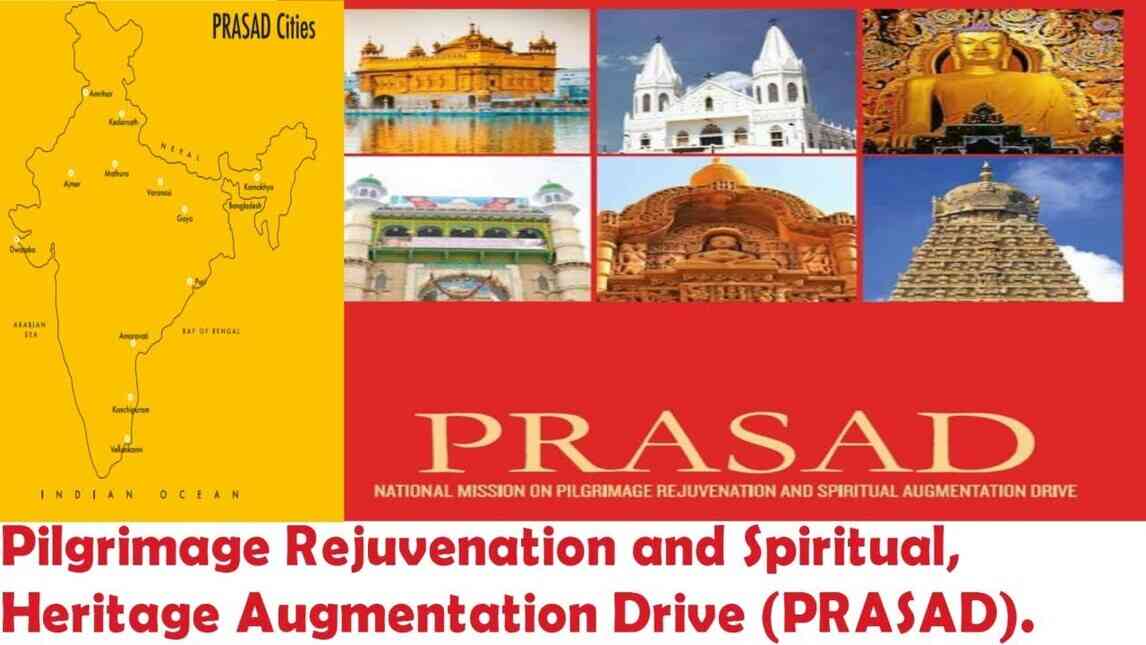7 Crore+ Customers

Affordable Premium

7 Crore+ Customers

Affordable Premium



India is notable for its cultural heritage and spiritual prowess. It houses multiple faiths and consequently contributes to several pilgrimage sites, attracting domestic and international tourists every year. According to IBEF, pilgrimage tourism is one of the most significant contributors to the Indian tourism industry. To boost this, the Ministry of Tourism of the Indian Government introduced Prasad Scheme. Discover more detailed information about this scheme in this upcoming segment.
The Prasad Scheme aims to develop pilgrimage or heritage sites in a sustainable and planned manner by establishing a comprehensive tourism infrastructure that will provide tourists with a convenient experience. This will attract more tourists and create employment opportunities among the local populace.
Go through the following objectives of the Prasad Scheme that it aims to fulfil:
The Ministry of Tourism will recognise the important pilgrimage tourist destinations after consulting states and stakeholders.
The authority will select the tourist location on the basis of the following potential factors:
Besides, the Ministry of Tourism select heritage cities on the basis of the following factors:
Twelve cities that have been recognised based on these criteria are:
Amaravati (Andhra Pradesh)
Kamakhya (Assam)
Puri (Odisha)
Dwaraka (Gujarat)
Amritsar (Punjab)
Gaya (Bihar)
Ajmer (Rajasthan)
Varanasi (Uttar Pradesh)
Mathura (Uttar Pradesh)
Kanchipuram (Tamil Nadu)
Velankanni (Tamil Nadu)
Kedarnath (Uttarakhand)
Here are some of the project components that qualify to receive financial assistance from the Central Government:
Moreover, establishing a data reporting and analysis facility is also one of the components that qualify for Central financial support.
There is no direct application procedure to apply for this scheme. The official authorities follow the following methods for project implementation under this scheme:
The Ministry of Tourism established a Mission Directorate as an implementing agency of this scheme. Its primary function is to recognise projects in the selected cities and cooperate with states or Union Territories to implement the scheme.
The State Project Management Unit will prepare the Integrated Plans.
After approval of IPs, the State Government will prepare the DPR on the recognised project and submit it to the Mission Directorate for its consent to proceed.
The following steps include a presentation by the State Government on the DPR.
PMC visits the identified site to prepare a site observation report.
The State Government submits the DPR for assessment by the Ministry of Tourism, PMC and MD.
After the evaluation of MD, CSMC considers its recommendation and sends a proposal to IFD for approval.
The Minister of Tourism issues a sanction letter that approves implementing a proposed project.
The most significant benefit of the Prasad scheme is that it will help to preserve the cultural significance of heritage or pilgrimage sites and provide a comfortable tourist experience. Besides, it will act as a spur to the economic development of local communities. Individuals willing to learn more about it can check the official portal for detailed information.